With this trip, you get the drive on GG Bridge, a little drive in the Marin Headlands, a walk on coastal cliffs, interesting native (and non-native) plant life, birds and marine mammals, views that range from moody and sublime to sweeping and grand, a dark rock tunnel to walk through, an old suspension bridge to walk on (two people at a time, 500 lb. limit), an old lighthouse, and a bit of local history. What more could you ask for?
View Larger Map
The view. I could take pictures of GG Bridge all day, no matter the weather.
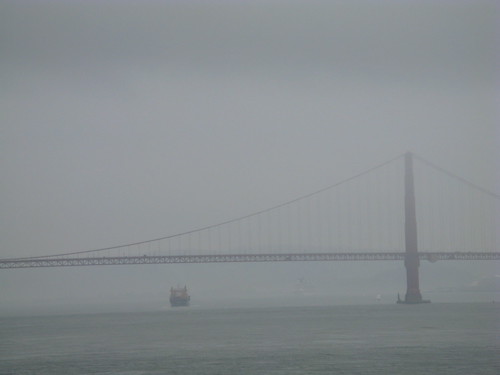
But, this blog post has a stated purpose. We're here to visit the lighthouse. It's a short walk from the parking lot (aka, the side of the road)
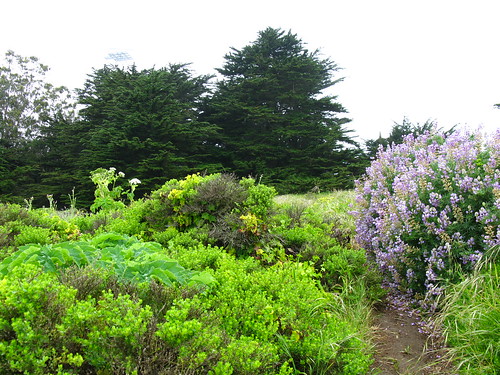

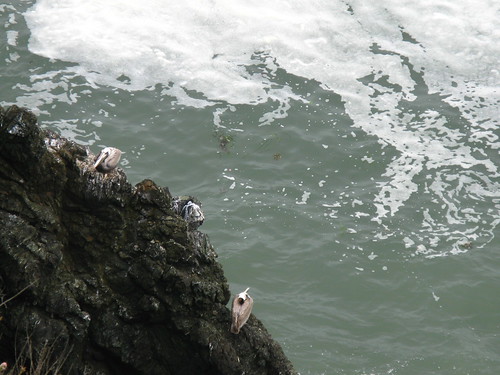

The red iceplant (Carpobrotus) is a much-hated invasive from South America planted to stabilize California's erosive coastal cliffs. Yeah, right--that'll work. Well, at least it's colorful.


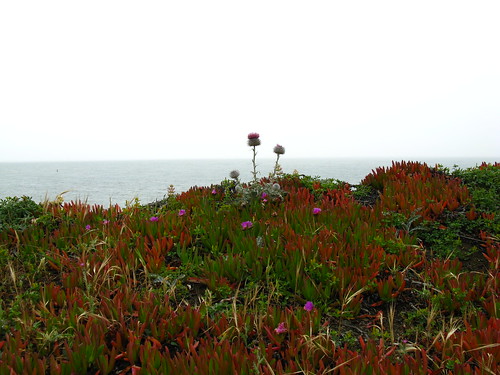
The thistles however are native, and are somewhat trendy in native gardens right now. For some people's native gardens, anyway. Your blogger is not so adventurous in the small city garden.
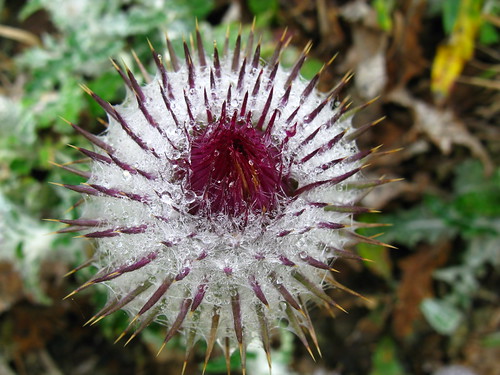
Although he thinks it might be interesting to try.
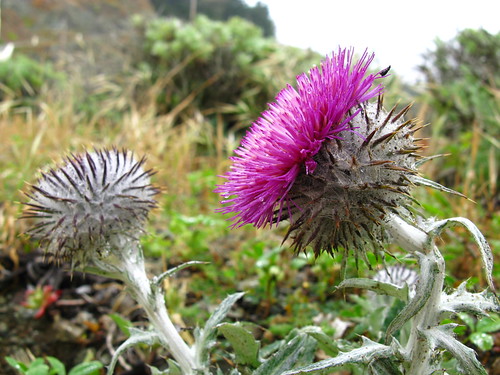
I'm losing against the Alzheimer's today...Cirsium occidentale?
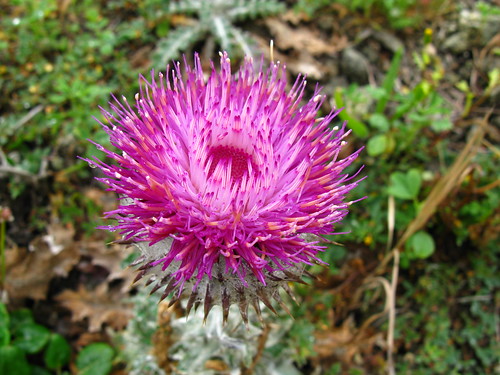
This is a good place to see a variety of native plants, actually. I'll give them a nomenclatural shot:
Ranunculus californicus

Lupinus albifrons

Perhaps the best native perennial lupine for the garden. The flowers smell strongly of grape juice. And who doesn't want that in the garden.
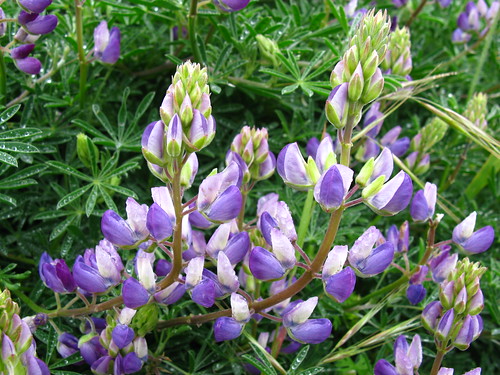
Mimulus aurantiacus

I'm going to call this Eriogonum latifolium, but again I'm not 100% on that.
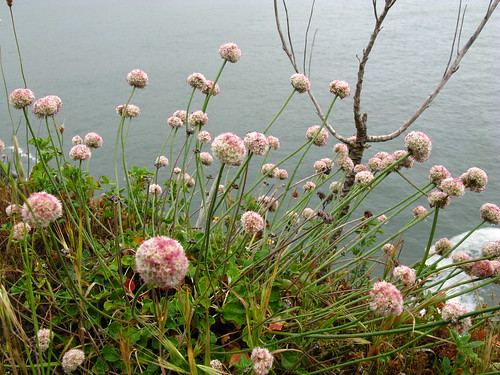
And I'll call this one Artemisia californica or A. pycnocephala; corrections welcome in the comments:
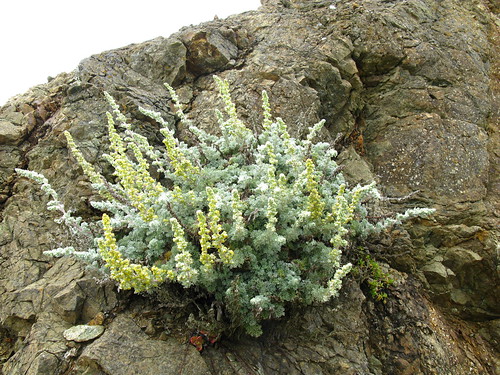

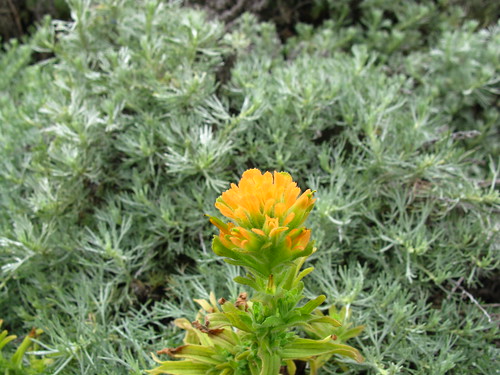
And not just plants. Remember how to tell the difference between seals and sea lions?

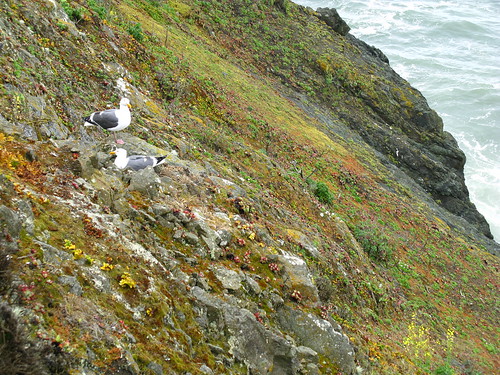
Moving on...
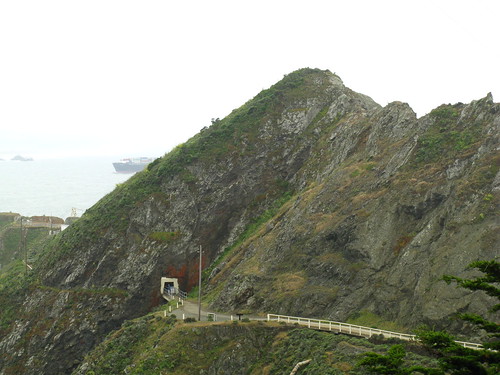
For whatever reason, I'm in photographic love with the container ships that sail in and out of San Francisco Bay all day long.
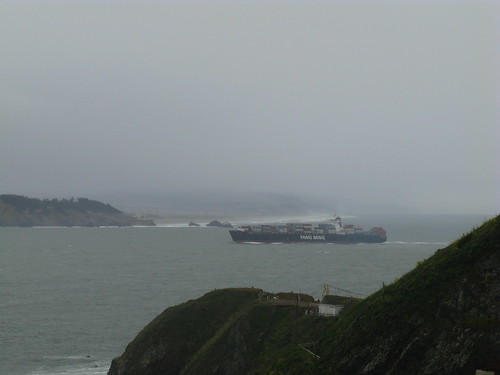
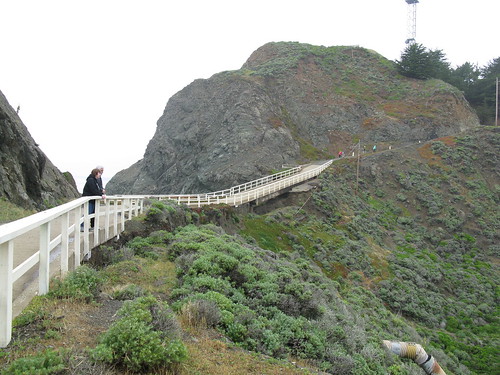

We have a tunnel to walk through.
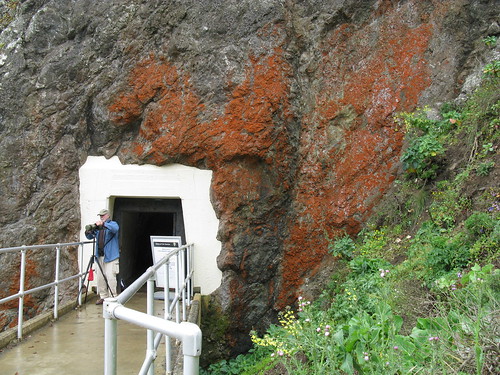
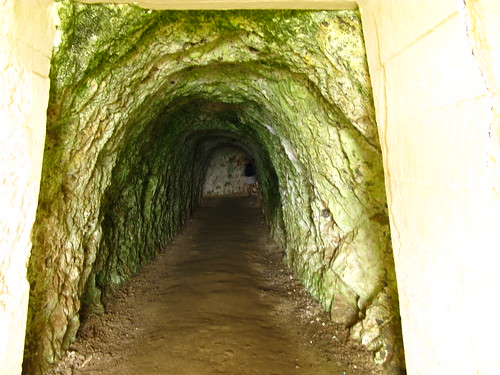
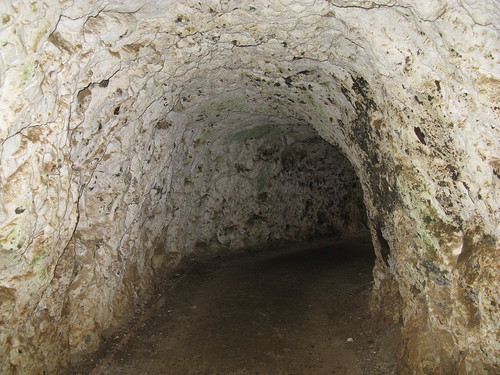
Out the other side.

Almost there.
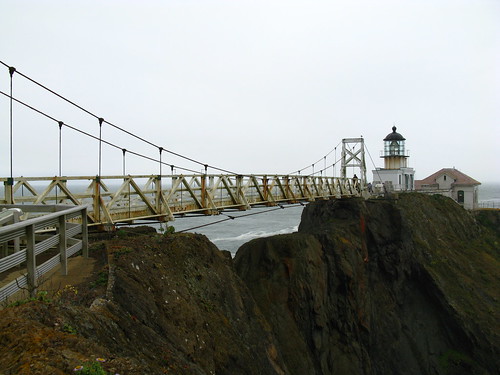
But first let's love the suspension bridge.
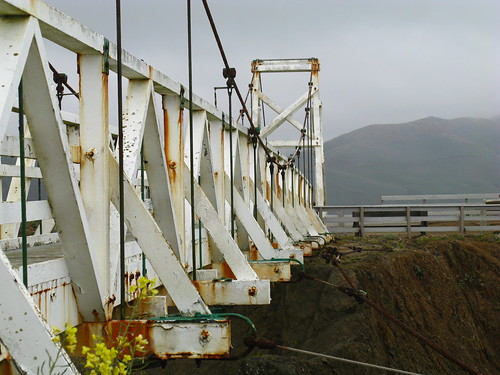
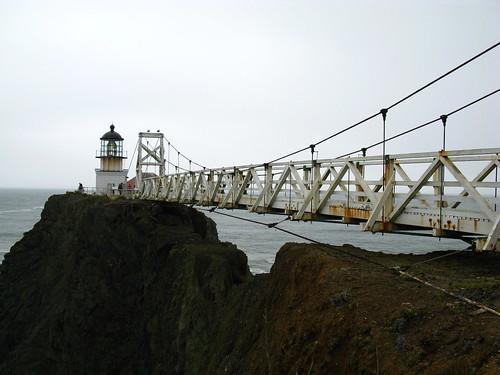
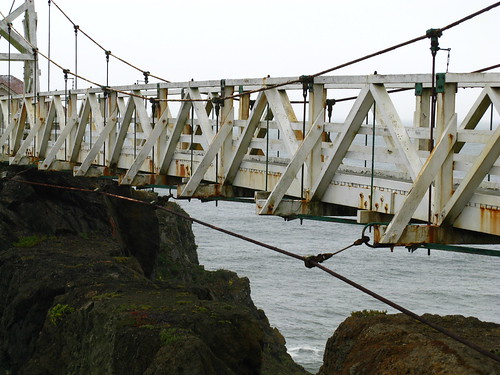
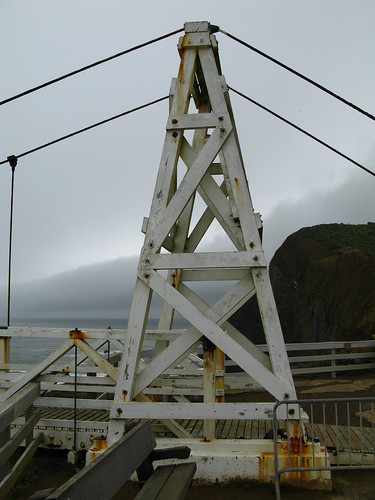
Shall we?
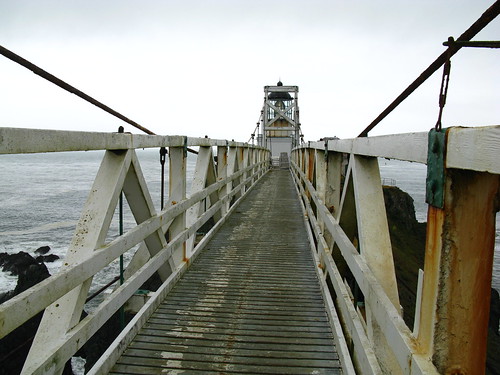
The view from the bridge, looking north:
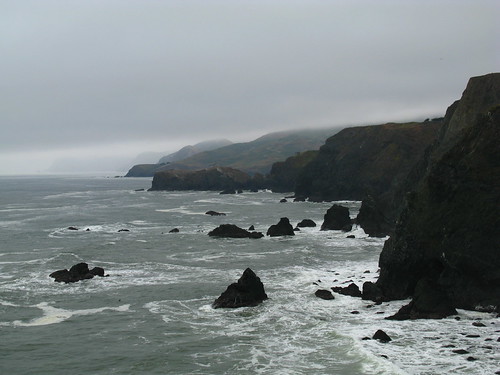
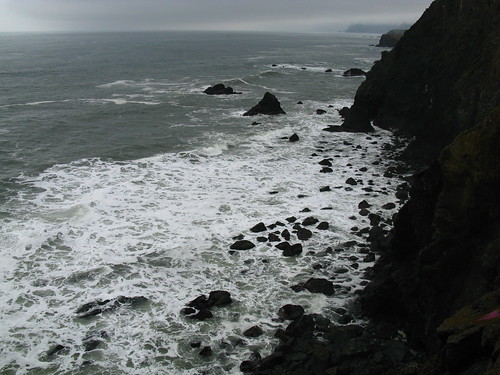
On the other side
The lighthouse itself
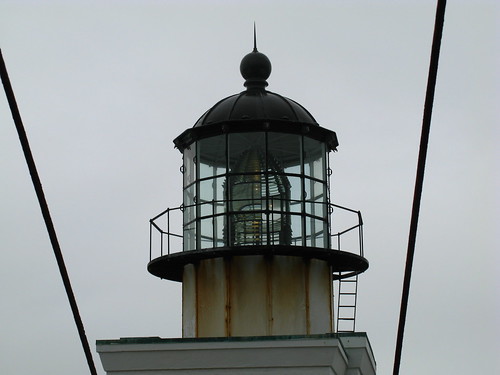
has a tiny museum inside
to show you how dangerous
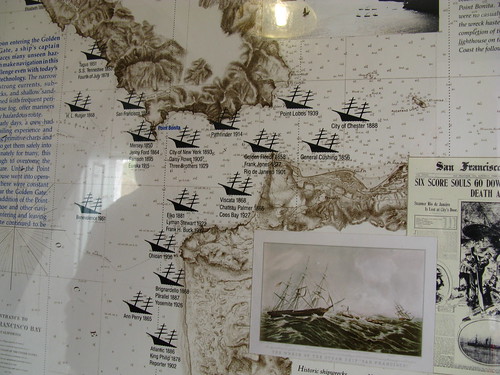
these waters are (or were).
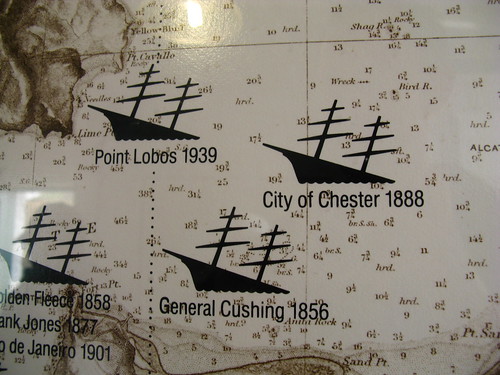

7 comments:
Wonderful tour(-: Love the Seals(-:
We have some thistles here that grow wild and they are a real pain. Pretty to look at but they are like needles if you get to close.
I have a plant id question for you. I found this growing in a stream near Whitmore. I wondered what it is. Here are three pictures that might help you id it(-: Thanks(-:
firstsecondthird
Think I found it. Is it a Darmera?
CiNdEeS' GaRdEn
Readers, is it Darmera peltata?
Looks like Carpobrotus was introduced all over the world. Here they did the same mistake with the excuse that it would help stabilize the dunes in the beaches....(!). Needless to say it is everywhere now...
I'm also thinking of introducing a few thistles in my garden. They are such structural plants.
Loved the seals, it must be great to see them in the wild (...gosh, I do miss the time when I worked with marine mammals...)
What lucky guests you have to be treated to such great day trips!
Could the yellow indian paintbrush be Castilleja affinis ssp. neglecta? C. occidentalis doesn't seem to be native to coastal areas per the USDA plants database.
Another way to tell harbor seals from sea lions when they are in groups is that harbor seals have a larger "personal space" than sea lions. Harbor seals will line up next to each other on the beach but not lay on top of each other, whereas the sea lions will pile up more.
Thanks for another great sight seeing trip!
Thanks for the tip!
Deja vu.
The thistles here, Cirsium vulgare are wicked spiny. I traded them in for Echinops bannaticus 'Blue Glow'.
Post a Comment